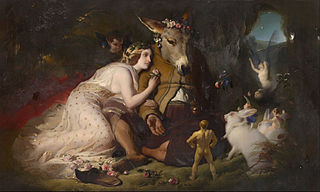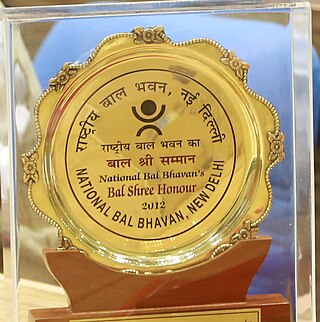Related Research Articles

Creativity is a characteristic of someone that forms something novel and valuable. The created item may be intangible or a physical object. Creativity enables people to solve problems in new or innovative ways.

Lateral thinking is a manner of solving problems using an indirect and creative approach via reasoning that is not immediately obvious. It involves ideas that may not be obtainable using only traditional step-by-step logic.

Brainstorming is a creativity technique in which a group of people interact to suggest ideas spontaneously in response to a prompt. Stress is typically placed on the volume and variety of ideas, including ideas that may seem outlandish or "off-the-wall". Ideas are noted down during the activity, but not assessed or critiqued until later. The absence of criticism and assessment is intended to avoid inhibiting participants in their idea production. The term was popularized by advertising executive Alex Faickney Osborn in the classic work Applied Imagination (1953).
The Triarchic Theory of Intelligence or Three Forms of Intelligence, formulated by psychologist Robert Sternberg, aims to go against the psychometric approach to intelligence and take a more cognitive approach, which leaves it to the category of the cognitive-contextual theories. The three meta components are also called triarchic components.

Links between creativity and mental health have been extensively discussed and studied by psychologists and other researchers for centuries. Parallels can be drawn to connect creativity to major mental disorders including bipolar disorder, autism, schizophrenia, major depressive disorder, anxiety disorder, OCD and ADHD. For example, studies have demonstrated correlations between creative occupations and people living with mental illness. There are cases that support the idea that mental illness can aid in creativity, but it is also generally agreed that mental illness does not have to be present for creativity to exist.
Creativity techniques are methods that encourage creative actions, whether in the arts or sciences. They focus on a variety of aspects of creativity, including techniques for idea generation and divergent thinking, methods of re-framing problems, changes in the affective environment and so on. They can be used as part of problem solving, artistic expression, or therapy.
Design thinking refers to the set of cognitive, strategic and practical procedures used by designers in the process of designing, and to the body of knowledge that has been developed about how people reason when engaging with design problems.

The following outline is provided as an overview of and topical guide to thought (thinking):

Divergent thinking is a thought process used to generate creative ideas by exploring many possible solutions. It typically occurs in a spontaneous, free-flowing, "non-linear" manner, such that many ideas are generated in an emergent cognitive fashion. Many possible solutions are explored in a short amount of time, and unexpected connections are drawn. Following divergent thinking, ideas and information are organized and structured using convergent thinking, which follows a particular set of logical steps to arrive at one solution, which in some cases is a "correct" solution.
Fluency refers to continuity, smoothness, rate, and effort in speech production. It is also used to characterize language production, language ability or language proficiency.

Computational creativity is a multidisciplinary endeavour that is located at the intersection of the fields of artificial intelligence, cognitive psychology, philosophy, and the arts.

The majority of studies on sleep creativity have shown that sleep can facilitate insightful behavior and flexible reasoning, and there are several hypotheses about the creative function of dreams. On the other hand, a few recent studies have supported a theory of creative insomnia, in which creativity is significantly correlated with sleep disturbance.
Convergent thinking is a term coined by Joy Paul Guilford as the opposite of divergent thinking. It generally means the ability to give the "correct" answer to questions that do not require novel ideas, for instance on standardized multiple-choice tests for intelligence.
The Torrance Tests of Creative Thinking, formerly the Minnesota Tests of Creative Thinking, is a test of creativity built on J. P. Guilford's work and created by Ellis Paul Torrance, the Torrance Tests of Creative Thinking originally involved simple tests of divergent thinking and other problem-solving skills, which were scored on four scales:
Williams' taxonomy is a hierarchical arrangement of eight creative thinking skills conceived, developed, and researched by Frank E. Williams, a researcher in educational psychology. The taxonomy forms the basis of a differentiated instruction curriculum model used particularly with gifted students and in gifted education settings.
Small-scale project management is the specific type of project management of small-scale projects. These projects are characterised by factors such as short duration; low person hours; small team; size of the budget and the balance between the time committed to delivering the project itself and the time committed to managing the project. They are otherwise unique, time delineated and require the delivery of a final output in the same way as large-scale projects.
Systematic Inventive Thinking (SIT) is a thinking method developed in Israel in the mid-1990s. Derived from Genrich Altshuller's TRIZ engineering discipline, SIT is a practical approach to creativity, innovation and problem solving, which has become a well known methodology for innovation. At the heart of SIT's method is one core idea adopted from Genrich Altshuller's TRIZ which is also known as Theory of Inventive Problem Solving (TIPS): that inventive solutions share common patterns. Focusing not on what makes inventive solutions different – but on what they share in common – is core to SIT's approach.
The Remote Associates Test (RAT) is a creativity test used to determine a human's creative potential. The test typically lasts forty minutes and consists of thirty to forty questions each of which consists of three common stimulus words that appear to be unrelated. The subject must think of a fourth word that is somehow related to each of the first three words. Scores are calculated based on the number of correct questions.

The National Bal Shree Honour is awarded to creative children in the age group of 9–16 years. National Bal Shree Honour is constituted by National Bal Bhawan, an autonomous body of Ministry of Human Resource Development (India). The Honour includes a plaque, a certificate, educational resources and a cash prize. National Bal Shree Honour is usually awarded by the Minister of Human Resource Development at Vigyan Bhavan in New Delhi.
Creative education is when students are able to use imagination and critical thinking to create new and meaningful forms of ideas where they can take risks, be independent and flexible. Instead of being taught to reiterate what was learned, students learn to develop their ability to find various solutions to a problem. Coming up with various out-of-the box solutions is known as divergent thinking and there is no one way of cultivating this skill - largely due to the newness of the concept and the limited scientific information on creativity.
References
- 1 2 "The Alternative Uses Test". Creative Huddle.
- ↑ Alice Harman (7 April 2020). Who Do You Think You Are?: 20 psychology tests to explore your growing mind. Wide Eyed Editions. p. 72. ISBN 978-1-78603-649-0 . Retrieved 18 June 2020.
- 1 2 Vartanian, Oshin; Beatty, Erin L; Smith, Ingrid; Forbes, Sarah; Rice, Emma; Crocker, Jenna (1 June 2019). "Measurement matters: the relationship between methods of scoring the Alternate Uses Task and brain activation". Current Opinion in Behavioral Sciences. 27: 109–115. doi:10.1016/j.cobeha.2018.10.012. S2CID 53303674.